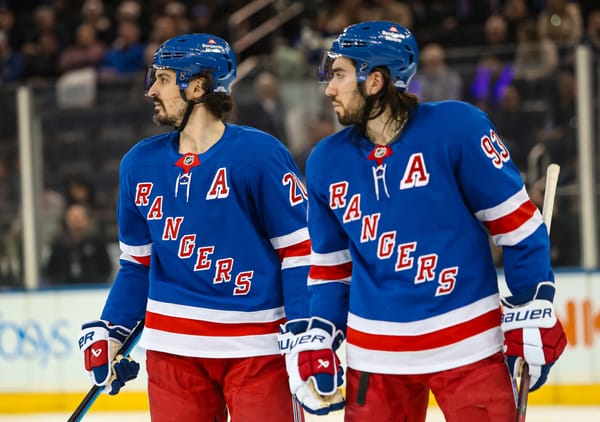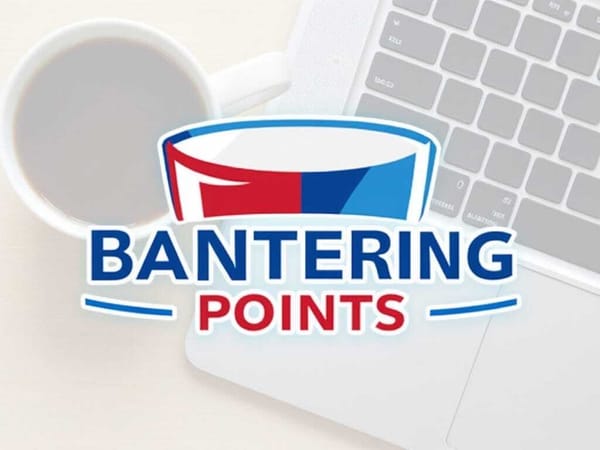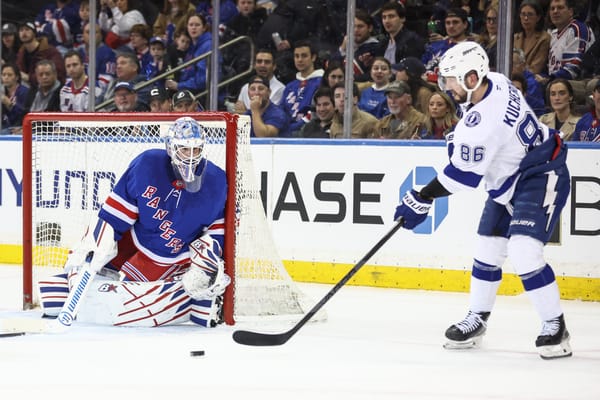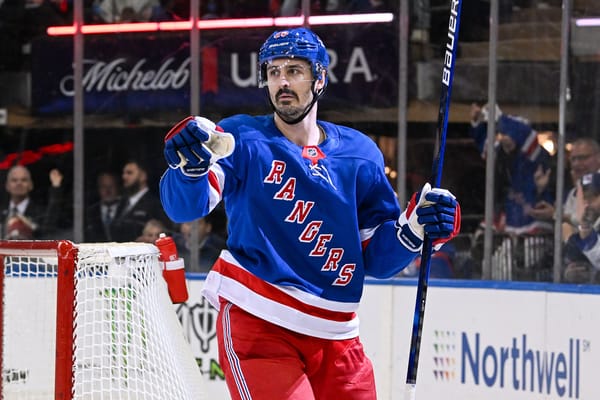Holden and Staal: A Recipe for Disaster
The pair that could undermine the Rangers’ revamped blue line.
General manager Jeff Gorton made a number of overdue transactions to transform this blue line this offseason. Stalwart defenseman Dan Girardi was bought out of the final three seasons of his six year, $33 million contract. Kevin Shattenkirk, the most highly sought-after free agent defenseman was signed to a four year, $26.6 million contract. Brendan Smith, who was acquired from Detroit at the trade deadline, was extended for four years, earning $17.4 million. Twenty-one year old Anthony DeAngelo was a trade piece acquired from the Arizona Coyotes.
The Rangers now potentially have a top four of Ryan McDonagh, Kevin Shattenkirk, Brady Skjei, and Brendan Smith next season, as compared to last season’s top four of McDonagh, Girardi, Marc Staal, and Nick Holden. As it stands, both Staal and Holden still remain on the team, but cannot be their second pair any longer.
Think back to last season when the defense was absolutely cringe-worthy. During the regular season, the pairs most often deployed were McDonagh-Girardi, Holden-Staal, and Brady Skjei-Kevin Klein. In the postseason, Smith replaced Klein on the third pair. Through the regular season and postseason, the pair of Holden-Staal was quite possibly the worst pair of the Rangers’ defense.
It’s been discussed at length how Staal’s play has declined in recent seasons and how he could have found himself in Girardi’s position as the significant contract bought out. Holden’s defensive deficiencies that were absolutely detrimental to this team have been a topic of conversation as well.
The fact of the matter is that neither Staal nor Holden deserved the role or ice time they received this season. Unfortunately, Staal is not the player he once was and cannot be relied on in the same way. Holden too was deployed in a role that he simply was not meant for, and it was evident all season. The onus was on Rangers’ head coach Alain Vigneault to adjust his lineup accordingly, and he consistently failed to do so.
When the Rangers traded a fourth-round pick for Holden, Alain Vigneault received a call from former Colorado Avalanche head coach Patrick Roy regarding Holden, where he classified him as “anywhere from a fourth to a sixth defenseman on a good team.” Somehow, that was misconstrued as top four defenseman because Holden was utilized in a role far above his abilities.
The Holden-Staal pair maintained their role as the second-pair in the regular season and postseason, even when there were more favorable options to shoulder an expanded role. The pair either needed to be broken up or limited to a sheltered third-pair role, yet no matter how much they blatantly stumbled, no changes were made.
Together, their defensive game was a clear issue for the Rangers. Far too often, this pair overcommitted to a certain area, leaving goaltender Henrik Lundqvist vulnerable. Holden’s high-risk offensive plays also came at a cost, because he would pinch and force Staal to defend against an odd-man rush frequently, which he clearly struggled with.
The Holden-Staal pair played 677.59 minutes of 5v5 in the regular season, which was the second highest of all 18 defensive pairs that played at least 50 minutes of 5v5 ice time. They were on the ice for more shot attempts against than for (with a 46.72 Corsi for percentage, which was the fifth lowest of the defensive pairs). Additionally, they were on the ice for a high number of scoring chances against without contributing many scoring chances for, which resulted in a 44.29 scoring chances for percentage (which was the second lowest of all defensive pairs). Their expected goals for percentage was unfavorable as well as compared to the rest of the pairs deployed (43.87, which was the third lowest).
Moving into the postseason, this pair was wrongly played in the most crucial situations. In fact, their play was so detrimental that it cost the Rangers Game 2 against the Montreal Canadiens, as they were on the ice for all of the regulation goals against. In theory, their coach should have recognized their poor play and either adjusted their tactics or lessened their ice time. Instead, the coaches continued to deploy the pair even in the dying seconds of a one-goal game (which quickly became a tie game in the final 17 seconds which forced the game to overtime, where the Rangers lost).
The pair faced a high number of shot attempts against (64.67 per 60) and shots against (31.94 per 60). However, they effectively limited scoring chances against (5.59 per 60). Still, they were on the ice for seven 5v5 goals against (2.79 per 60).
Vigneault and recently hired defensive coach Lindy Ruff have options for the third pair other than Holden-Staal, even if the top four is a combination of McDonagh, Shattenkirk, Skjei, and Smith. Unless DeAngelo truly demonstrates the need for seasoning in the AHL, he should be utilized next season – especially after what the Rangers sent to Arizona to acquire him. And if not DeAngelo, the Rangers still have Alexei Beregalzov, Neal Pionk, Vince Pedrie, and Ryan Graves in their system who could provide defensive depth, rather than playing Holden and Staal together.
With such an improved defense, the idea of using Holden-Staal in a second-pair role seems unrealistic, right? Here’s the thing. Girardi’s “shutdown” play was so ineffective last season and as much as Vigneault said his role would be diminished, it wasn’t. Holden-Staal were awful in the postseason and their play was so costly to the Rangers, but Vigneault inexplicably did not change his defensive deployment or strategies to improve his team’s chances. So, as much as Holden-Staal not being a pair next season seems like the obvious choice, this is somehow still a concern for next season.
*5v5 data via Corsica.hockey.




